 W
WAn airlock is a device which permits the passage of people and objects between a pressure vessel and its surroundings while minimizing the change of pressure in the vessel and loss of air from it. The lock consists of a small chamber with two airtight doors in series which do not open simultaneously.
 W
WThe terms Androgynous Peripheral Attach System (APAS), Androgynous Peripheral Assembly System (APAS) and Androgynous Peripheral Docking System (APDS), are used interchangeably to describe a family of spacecraft docking mechanisms, and are also sometimes used as a generic name for any docking system in that family. A system similar to APAS-89/95 is used by the Chinese Shenzhou spacecraft.
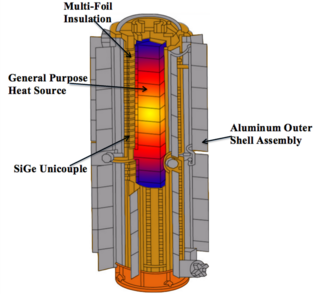 W
WSilicon-germanium (SiGe) thermoelectrics have been used for converting heat into power in spacecraft designed for deep-space NASA missions since 1976. This material is used in the radioisotope thermoelectric generators (RTGs) that power Voyager 1, Voyager 2, Galileo, Ulysses, Cassini, and New Horizons spacecraft. SiGe thermoelectric material converts enough radiated heat into electrical power to fully meet the power demands of each spacecraft. The properties of the material and the remaining components of the RTG contribute towards the efficiency of this thermoelectric conversion.
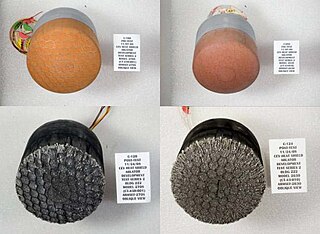 W
WAVCOAT 5026-39 is a NASA code for a specific ablative heat shield material created by Avco . It is an epoxy novolac resin with special additives in a fiberglass honeycomb matrix. In fabrication, the empty honeycomb is bonded to the primary structure and the resin is gunned into each cell individually.
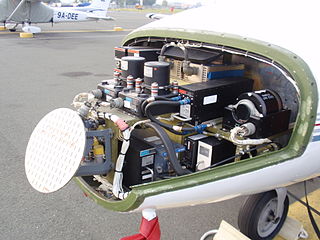 W
WAvionics are the electronic systems used on aircraft, artificial satellites, and spacecraft. Avionic systems include communications, navigation, the display and management of multiple systems, and the hundreds of systems that are fitted to aircraft to perform individual functions. These can be as simple as a searchlight for a police helicopter or as complicated as the tactical system for an airborne early warning platform. The term avionics is a portmanteau of the words aviation and electronics.
 W
WThe ballute is a parachute-like braking device optimized for use at high altitudes and supersonic velocities.
 W
WBatteries are used on spacecraft as a means of power storage. Primary batteries contain all their usable energy when assembled and can only be discharged. Secondary batteries can be re-charged from some other energy source, such as solar panels, and can deliver power during periods when the space vehicle is out of direct sunlight. Batteries generate electrical current from a chemical reaction.
 W
WA boilerplate spacecraft, also known as a mass simulator, is a nonfunctional craft or payload that is used to test various configurations and basic size, load, and handling characteristics of rocket launch vehicles. It is far less expensive to build multiple, full-scale, non-functional boilerplate spacecraft than it is to develop the full system. In this way, boilerplate spacecraft allow components and aspects of cutting-edge aerospace projects to be tested while detailed contracts for the final project are being negotiated. These tests may be used to develop procedures for mating a spacecraft to its launch vehicle, emergency access and egress, maintenance support activities, and various transportation processes.
 W
WCanadarm or Canadarm1 is a series of robotic arms that were used on the Space Shuttle orbiters to deploy, manoeuvre, and capture payloads. After the Space Shuttle Columbia disaster, the Canadarm was always paired with the Orbiter Boom Sensor System (OBSS), which was used to inspect the exterior of the Shuttle for damage to the thermal protection system.
 W
WThe Common Berthing Mechanism (CBM) connects habitable elements in the US Orbital Segment (USOS) of the International Space Station (ISS). The CBM has two distinct sides that, once mated, form a cylindrical vestibule between modules. The vestibule is about 16 inches (0.4 m) long and 6 feet (1.8 m) across. At least one end of the vestibule is often limited in diameter by a smaller bulkhead penetration.
 W
WDocking and berthing of spacecraft is the joining of two space vehicles. This connection can be temporary, or partially permanent such as for space station modules.
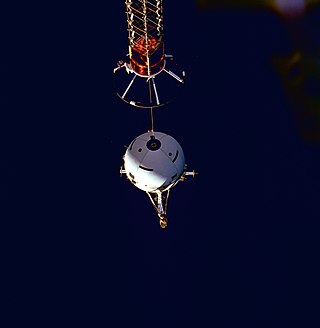 W
WElectrodynamic tethers (EDTs) are long conducting wires, such as one deployed from a tether satellite, which can operate on electromagnetic principles as generators, by converting their kinetic energy to electrical energy, or as motors, converting electrical energy to kinetic energy. Electric potential is generated across a conductive tether by its motion through a planet's magnetic field.
 W
WThe Extended Duration Orbiter (EDO) program was a project by NASA to prepare for long-term (months) microgravity research aboard Space Station Freedom, which later evolved into the International Space Station. Scientists and NASA needed practical experience in managing progressively longer times for their experiments. The original Space Shuttle configuration usually provided a week to ten days of spaceflight. Several research projects and hardware components were part of the project, of which the EDO-pallet was one of the most visible, contracted by Rockwell International.
 W
WA flight spare is a copy of a spacecraft or spacecraft part which is held in reserve in case it is needed for the mission. Flight spares are built to the same specifications as the original equipment, and can be substituted in the case of damage or other problems with the flight model, reducing launch delays. The extra cost of building a flight spare can be justified by the enormous cost of delaying a launch by even a short amount of time.
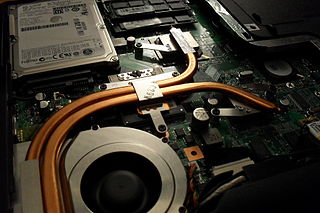 W
WA heat pipe is a heat-transfer device that combines the principles of both thermal conductivity and phase transition to effectively transfer heat between two solid interfaces.
 W
WThe Hemispherical Resonator Gyroscope (HRG), also called wine-glass gyroscope or mushroom gyro, is a compact, low noise, high performance angular rate or rotation sensor. An HRG is made using a thin solid-state hemispherical shell, anchored by a thick stem. This shell is driven to a flexural resonance by electrostatic forces generated by electrodes which are deposited directly onto separate fused-quartz structures that surround the shell. The gyroscopic effect is obtained from the inertial property of the flexural standing waves. Although the HRG is a mechanical system, it has no moving parts, and can be very compact.
 W
WAn inertial navigation system (INS) is a navigation device that uses a computer, motion sensors (accelerometers) and rotation sensors (gyroscopes) to continuously calculate by dead reckoning the position, the orientation, and the velocity of a moving object without the need for external references. Often the inertial sensors are supplemented by a barometric altimeter and sometimes by magnetic sensors (magnetometers) and/or speed measuring devices. INSs are used on mobile robots and on vehicles such as ships, aircraft, submarines, guided missiles, and spacecraft. Other terms used to refer to inertial navigation systems or closely related devices include inertial guidance system, inertial instrument, inertial measurement unit (IMU) and many other variations. Older INS systems generally used an inertial platform as their mounting point to the vehicle and the terms are sometimes considered synonymous.
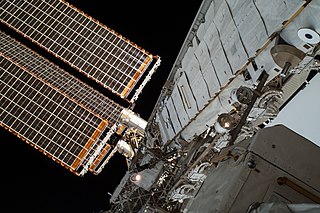 W
WThe Integrated Truss Structure (ITS) of the International Space Station (ISS) consists of a linear arranged sequence of connected trusses on which various unpressurized components are mounted such as logistics carriers, radiators, solar arrays, and other equipment. It supplies the ISS with a bus architecture. It is approximately 110 meters long and is made from aluminum and stainless steel.
 W
WThe International Docking Adapter (IDA) is a spacecraft docking system adapter developed to convert APAS-95 to the NASA Docking System (NDS). An IDA is placed on each of the International Space Station's (ISS) two open Pressurized Mating Adapters (PMAs), both of which are connected to the Harmony module.
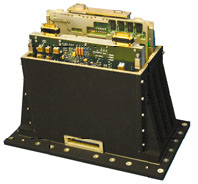 W
WInternet Routing in Space (IRIS) was a program to build a radiation-tolerant IP router created by Cisco Systems for satellite and related spacecraft. It was a follow-on from Cisco's earlier CLEO router in space on the UK-DMC satellite. The Cisco Space Router was launched to geostationary orbit on board Intelsat 14 (IS-14), a spacecraft built by Space Systems/Loral for satellite operator Intelsat, in November 2009. IRIS was evaluated by the United States Department of Defense by way of a JCTD. The Space Router runs Cisco IOS software and also contains an onboard Software-defined radio running satellite modem waveforms. The United States Department of Defense used the JCTD to evaluate the reduced latency, improved throughput and increased flexibility provided by the Space Router.
 W
WJuno Radiation Vault is a compartment inside the Juno spacecraft that houses much of the probe's electronics and computers, and is intended to offer increased protection of radiation to the contents as the spacecraft endures the radiation environment at planet Jupiter. The Juno Radiation Vault is roughly a cube, with walls made of 1 cm thick titanium metal, and each side having an area of about a square meter. The vault weights about 200 kg (500 lbs). Inside the vault are the main command and data handling and power control boxes, along with 20 other electronic boxes. The vault should reduce the radiation exposure by about 800 times, as the spacecraft is exposed to an anticipated 20 million rads of radiation It does not stop all radiation, but significantly reduces it in order to limit damage to the spacecraft's electronics.
 W
WA launch escape system (LES) or launch abort system (LAS) is a crew safety system connected to a space capsule, used to quickly separate the capsule from its launch vehicle rocket in case of a launch abort emergency, such as an impending explosion. The LES is typically controlled by a combination of automatic rocket failure detection, and a manual activation for the crew commander's use. The LES may be used while the launch vehicle is still on the launch pad, or during its ascent. Such systems are usually of two types:A solid-fueled rocket, mounted above the capsule on a tower, which delivers a relatively large thrust for a brief period of time to send the capsule a safe distance away from the launch vehicle, at which point the capsule's parachute recovery system can be used for a safe landing on ground or water. The tower and rocket are jettisoned from the space vehicle in a normal flight at the point where it is either no longer needed, or cannot be effectively used to abort the flight. These have been used on the Mercury, Apollo, Soyuz, and Shenzhou capsules. The crew are seated in ejection seats as used in military aircraft; each crew member returns to Earth with an individual parachute. Such systems are effective only in a limited range of altitudes and speeds. These have been used on the Vostok and Gemini capsules.
 W
WThe Max Launch Abort System (MLAS) was a proposed alternative to the Maxime Faget-invented "tractor" launch escape system (LES) that was planned for use by NASA for its Orion spacecraft in the event an Ares I malfunction during launch required an immediate abort.
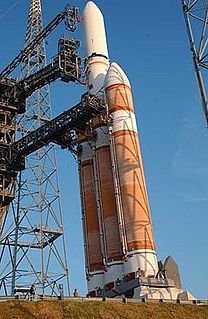 W
WA modular rocket is a type of multistage rocket which features components that can be interchanged for specific mission requirements. Several such rockets use similar concepts such as unified modules to minimize expenses on manufacturing, transportation and for optimization of support infrastructure for flight preparations.
 W
WThe NASA Docking System (NDS) is a spacecraft docking and berthing mechanism being developed for future US human spaceflight vehicles, such as the Orion spacecraft and the Commercial Crew vehicles. The NDS is NASA's implementation of the International Docking System Standard (IDSS), an attempt by the International Space Station Multilateral Coordination Board (MCB) to create an international spacecraft docking standard. The international Low Impact Docking System (iLIDS) is the precursor to the NDS. The NDS Block 1, was designed and built by The Boeing Company in Houston TX, to meet the IDSS standards. Design qualification testing took place through January 2017.
 W
WThe orbital module is a compartment of some space capsules used only in orbit. It is separated from the crewed reentry capsule before reentry. The orbital module provides 'habitat' space to use in orbit, while the reentry capsule tends to be focused on the machinery needed to get seated passengers back safely, with heavy structural margins. These have developed for the Soyuz spacecraft.
 W
WOrbital replacement units (ORUs) are key elements of the International Space Station that can be readily replaced when the unit either passes its design life or fails. ORUs are parts of the main systems and subsystems of the external elements of the ISS, none are intended to be installed inside the pressurised modules. Examples of ORUs are: pumps, storage tanks, controller boxes, antennas, and battery units. Such units are replaced either by astronauts during EVA or by the Dextre (SPDM) robotic arm. All are stored on the three external stowage platforms (ESPs) or the four ExPRESS Logistics Carriers (ELCs) mounted on the Integrated Truss Structure (ITS).
 W
WThe Orbiter Boom Sensor System (OBSS) was a 50-foot boom carried on board NASA's Space Shuttles. The boom was grappled by the Canadarm and served as an extension of the arm, doubling its length to a combined total of 100 feet. At the far end of the boom was an instrumentation package of cameras and lasers used to scan the leading edges of the wings, the nose cap, and the crew compartment after each lift-off and before each landing. If flight engineers suspected potential damage to other areas, as evidenced in imagery captured during lift-off or the rendezvous pitch maneuver, then additional regions could be scanned.
 W
WA porthole, sometimes called bull's-eye window or bull's-eye, is a generally circular window used on the hull of ships to admit light and air. Though the term is of maritime origin, it is also used to describe round windows on armored vehicles, aircraft, automobiles and even spacecraft.
 W
WA reentry capsule is the portion of a space capsule which returns to Earth following a spaceflight. The shape is determined partly by aerodynamics; a capsule is aerodynamically stable falling blunt end first, which allows only the blunt end to require a heat shield for atmospheric entry. Its shape has also been compared to that of an old-fashioned automobile's headlight. A manned capsule contains the spacecraft's instrument panel, limited storage space, and seats for crew members. Because a capsule shape has little aerodynamic lift, the final descent is via parachute, either coming to rest on land, at sea, or by active capture by an aircraft. In contrast, the development of spaceplane reentry vehicles attempts to provide a more flexible reentry profile.
 W
WA retrorocket is a rocket engine providing thrust opposing the motion of a vehicle, thereby causing it to decelerate. They have mostly been used in spacecraft, with more limited use in short-runway aircraft landing. New uses are emerging since 2010 for retro-thrust rockets in reusable launch systems.
 W
WThe Saturn V instrument unit is a ring-shaped structure fitted to the top of the Saturn V rocket's third stage (S-IVB) and the Saturn IB's second stage. It was immediately below the SLA (Spacecraft/Lunar Module Adapter) panels that contained the Lunar Module. The instrument unit contains the guidance system for the Saturn V rocket. Some of the electronics contained within the instrument unit are a digital computer, analog flight control computer, emergency detection system, inertial guidance platform, control accelerometers, and control rate gyros. The instrument unit (IU) for Saturn V was designed by NASA at Marshall Space Flight Center (MSFC) and was developed from the Saturn I IU. NASA's contractor to manufacture the Saturn V Instrument Unit was International Business Machines (IBM).
 W
WSpacecraft operating in the inner Solar System usually rely on the use of photovoltaic solar panels to derive electricity from sunlight. Outside the orbit of Jupiter, solar radiation is too weak to produce sufficient power within current solar technology and spacecraft mass limitations, so radioisotope thermoelectric generators (RTGs) are instead used as a power source.
 W
WSolar sails are a method of spacecraft propulsion using radiation pressure exerted by sunlight on large mirrors. A number of spaceflight missions to test solar propulsion and navigation have been proposed since the 1980s. The first spacecraft to make use of the technology was IKAROS, launched in 2010.
 W
WA space suit or spacesuit is a garment worn to keep a human alive in the harsh environment of outer space, vacuum and temperature extremes. Space suits are often worn inside spacecraft as a safety precaution in case of loss of cabin pressure, and are necessary for extravehicular activity (EVA), work done outside spacecraft. Space suits have been worn for such work in Earth orbit, on the surface of the Moon, and en route back to Earth from the Moon. Modern space suits augment the basic pressure garment with a complex system of equipment and environmental systems designed to keep the wearer comfortable, and to minimize the effort required to bend the limbs, resisting a soft pressure garment's natural tendency to stiffen against the vacuum. A self-contained oxygen supply and environmental control system is frequently employed to allow complete freedom of movement, independent of the spacecraft.
 W
WSpacecraft magnetometers are magnetometers used aboard spacecraft and satellites, mostly for scientific investigations, plus attitude sensing. Magnetometers are among the most widely used scientific instruments in exploratory and observation satellites. These instruments were instrumental in mapping the Van Allen radiation belts around Earth after its discovery by Explorer 1, and have detailed the magnetic fields of the Earth, Moon, Sun, Mars, Venus and other planets and moons. There are ongoing missions using magnetometers, including attempts to define the shape and activity of Saturn's core.
 W
WSpacecraft propulsion is any method used to accelerate spacecraft and artificial satellites. In-space propulsion exclusively deals with propulsion systems used in the vacuum of space and should not be confused with space launch or atmospheric entry.
 W
WA suitport or suitlock is an alternative technology to an airlock, designed for use in hazardous environments and in human spaceflight, especially planetary surface exploration. Suitports present advantages over traditional airlocks in terms of mass, volume, and ability to mitigate contamination by—and of—the local environment.
 W
WA test article is a version of spacecraft or related vehicle or equipment, built as a platform to perform testing on particular portions of a spaceflight regime. Test articles are built to the specifications necessary to replicate particular conditions and behaviors that are to be validated. Test articles may be built for flight testing or for non-flight testing.
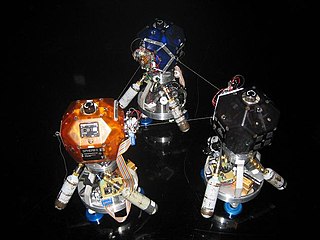 W
WTethered formation flying is one of applications for space tethers. This sub-set represents an entire area of research using a non-conductive tether to connect multiple spacecraft.
 W
WUniversal Space Interface Standard (USIS) is a physical interface between medium to large manned or unmanned spacecraft such as satellites, space stations and service tugs. It is designed to be suitable for adoption as an industry standard. Development is currently being undertaken by Mark Hempsell at Hempsell Astronautics Ltd. The rationale for the creation of an industry standard for spacecraft interfaces is that the number of applications for space vehicles is likely to increase greatly in the future. If each craft is utilising a common interface many new applications become feasible. This is somewhat analogous to the benefits which have been gained by widespread adoption of the USB connector in computing or even the standardisation of AC power plugs and sockets across some parts of the world.
 W
WA vernier thruster is a rocket engine used on a spacecraft for fine adjustments to the attitude or velocity of a spacecraft. Depending on the design of a craft's maneuvering and stability systems, it may simply be a smaller thruster complementing the main propulsion system, or it may complement larger attitude control thrusters, or may be a part of the reaction control system. The name is derived from vernier calipers which have a primary scale for gross measurements, and a secondary scale for fine measurements.
 W
WThe Whipple shield or Whipple bumper, invented by Fred Whipple, is a type of hypervelocity impact shield used to protect crewed and uncrewed spacecraft from collisions with micrometeoroids and orbital debris whose velocities generally range between 3 and 18 kilometres per second.
 W
WA yo-yo de-spin mechanism is a device used to reduce the spin of satellites, typically soon after launch. It consists of two lengths of cable with weights on the ends. The cables are wrapped around the final stage and/or satellite, in the manner of a double yo-yo. When the weights are released, the spin of the rocket flings them away from the spin axis. This transfers enough angular momentum to the weights to reduce the spin of the satellite to the desired value. Subsequently, the weights are often released.